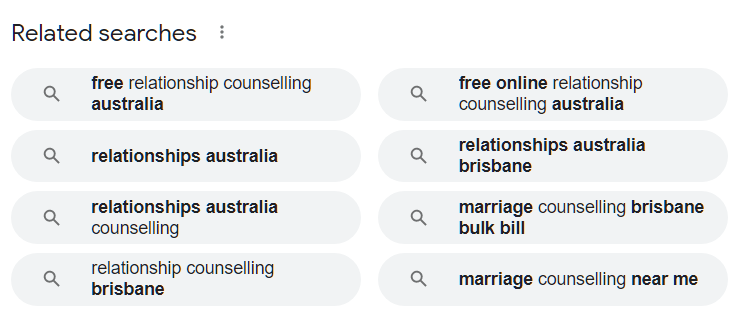Have you been left wondering what makes an effective website? If you have invested time and money into building a website (or planning to) it is essential that the website is a useful and valuable asset in your business.
Sadly, there are far too many businesses who seem content with their “brochure” style site. Something that generally looks nice and provides information about the business, but offers little more. Your website can, and should, do so much more than that!
For a service-based business a successful website ultimately, is one that generates leads and inquiries. Ideally though, your website should be your best sales person, working for you 24/7, even when you’re not working.
Transforming a stagnant website into a powerful sales tool, isn’t as difficult as you might be thinking. It doesn’t mean starting over again, having to build a whole new website. Let’s take a look at what makes an effective website and the small ways you can turn your existing website into one that works harder.
What should an effective website actually do?
Let’s look more closely at what an effective website should actually do. In particular, we are going to focus on websites for service-based businesses. While it may vary slightly depending on the type of business you have the basics are mostly the same. An effective service-based website should:
- Attract visitors both new and returning (attract)
- Provide easy access to the information they seek and keep their attention (convince)
- Clearly communicate what the next step should be and cause them to take action (convert)
- Continue to educate and inspire them to come back again (engage)
Website content should follow the buyer journey
The Attract > Convince > Convert > Engage pathway noted in the above is a model of the typical “buyer journey”. The buyer journey being the process we all move through when making a purchase decision. From a buyer’s perspective the stages of the buyer journey are defined as:
- Awareness Stage (attract)
- Consideration Stage (convince)
- Decision Stage (convert)
The Attract > Convince > Convert > Engage (A.C.C.E.) model however, looks at it from the business owner’s / marketer’s perspective. A fourth stage (Engage) is included as the aim of any successful business should be to build strong customer relationships, so that customers come back to you time and again. Therefore, the Engage stage is an important addition that helps facilitate the strengthening of the customer relationship.
At Artifex Studio we apply the A.C.C.E. model to every marketing activity – including your website. Visitors to your website will be on different stages of their buying journey, so it is important that the content of your website accommodates every stage.
But how do you make a website do all of that?
How does website content guide buyers along the buyer journey?
You can use the buyer journey to guide you through the type of content you should include in your website, the navigation to use and the all-important Call to Actions integrated into every page. Let’s dig deeper into how your website can approach each stage of the buyer journey using the A.C.C.E. model – making it a more effective sales and marketing tool for your business.
1. ATTRACT
The first role of any website is to attract people (often referred to as traffic) to the site’s pages. This mostly happens through searches in Search Engines like Google. Attracting search engines to your website isn’t terribly hard. Those little spider crawler bot thingies are zipping around web pages frequently. The trickier part, is getting the individual pages of your website to show up in the search result pages when visitors search for certain terms, phrases or questions that connect with your products and services.
(i) One topic per web page
The first step to increasing the likelihood of your web pages to be matched up to a Google search is by keeping each web page focussed on one topic. This is a classic example of why it is better to have a separate web page for each of your services, rather than one service page that lists a small paragraph of information on each service.
For example, a counsellor website who offers counselling services across a range of issues and people types such as, marriage counselling, family counselling, teenage counselling. Their website will serve them better if there is a page that speaks about each of those service types. When someone searches for “teenage counselling support” for example, a page that is dedicated to that topic will get better search results than a general counselling page covering a number of different services. Search Engines look at all the words on the page, sees that it is about teenage counselling and therefore would consider it more helpful to the searcher – presenting it higher in search pages.
(ii) Answer common questions asked in search
Another way to increase the likelihood of specific pages on your website to show up in relevant search requests is to answer common questions asked in search.
Google’s “People Also Ask”
Google is the friend to turn to when you want to discover what questions people are asking about your specific topic. Simply type in your serch query and scroll through the search results for the section “People Also Ask”. This section presents common questions others have been entering into Google searches that relate to your search query.
Google’s “Related Searches”
If you keep scrolling to the bottom of the search results page, Google usually displays another section titled “Related Searches”. This is another hint Google gives you about the type of things people search for that relate to your search query.
You can take those questions and related searches to prepare your own answers as it pertains to your specific service. Carefully craft your web page content so that it answers the queries of your intended visitors. Improve your content even further by structuring that content in a way that helps search engines derive better meaning and better match it to search requests. You can do this by using the questions and search terms in heading tags, bolded text and image alt tags.
2. CONVINCE
Convincing your prospective customers or clients that you are their best option isn’t about twisting arms until they choose you. It is simply presenting them with evidence that you have been able to help others with similar issues or concerns. Again, this is most likely much easier than you imagine as it can be achieved through different types of content you include in your website such as:
- Client testimonials and quotes
- Client reviews from Google or Facebook
- Case studies and success stories of past projects and clients
(i) Client Testimonials and Quotes
A customer testimonial (or client testimonial) is a statement from a third party about their experience with your business. Testimonials can be used on your home page, about page and specific product or services pages. I personally prefer to see testimonials scattered throughout the website, where the testimonial reflects the content of the page, rather than one page full of multiple testimonials. Testimonials help convince prospects that you are trustworthy and able to do what you say you can.
(ii) Client Reviews from Google or Facebook
A review from Google or Facebook is perceived to be more reliable and legitimate than a testimony on a website. Let’s be up front – a testimony could have been written by anyone about anything. However a review from another source like Google, first required the reviewer to have an account with them, and to have gone through a level of prooving that they are a real person. You can use code and plugins to automatically feed in third party reviews from these other platforms.
(iii) Case Studies and Success Stories of Past Projects and Clients
Including a more detailed case study or success story of a recently completed project or client you have helped is another type of website content that can be highly effective in convincing a prospect you are their best option.
Share the story of how you helped someone move from state A to state B and the success they are now experiencing. If the reader is able to identify with the story, and see themselves being like the person you have helped, they will have more confidence in you and trust you can help them as well.
3. CONVERT
(i) Clear Call to Actions
Clearly and consistently communicating the “next step” you want them to take with you is essential for a website that generates inquiries. We call this the “Call to Action” (CTA). Some popular Call to Actions used on a website are:
- a phone call (tap to call on mobile phones)
- filling out an inquiry form
- making a purchase
- booking an appointment
- completing a free offer optin request
- completing a more detailed inquiry form (this can help filter out tyre kickers)
What ever that next step is that you want your website visitors to take with you, it should be obvious, easy and on every page of the website.
(ii) A Conversion Form
Contact forms are a basic inclusion in every website. Including a slightly more detailed form (a conversion form), built for a specific purpose, can be another way to increase conversions through your website. For example, if you offer a specific service (such as logo designs) but need some extra details in order to provide a quote, an inquiry form specifically about that service can help generate new leads and secure an inquiry.
If a visitor fills out a form, they are already sold on the idea of working with you. Don’t be afraid to ask for more information than the standard name, phone, email and message. If people want to work with you, or find out more information, they are prepared to give more details.
4. ENGAGE
A truly successful website shouldn’t only be about new customers and clients. They can also be a useful tool for continuing the conversation with your existing customers, providing an opportunity to keep engaging and further building the trust relationship.
You can do this by regularly creating quality content that is suitable for both your exising customers and potential customers. Having quantity, quality, and fresh content is also important for search engines, as they see that your website is being updated with fresh information.
Some ways you can provide ongoing engagement with your customers through your websites include:
- content that is accessed through a membership login – this could be text or videos
- digital courses gives reason for you to keep engaging with your customers and provides an additional income source
- blog posts about relevant topics
- how to guides
- a subscription feature to your email newsletters
Checklist: content to include in a website
To wrap up, here is a checklist of all the content types you should consider including in your website, to make it a more effective tool for attracting leads and generating new inquiries.
- One topic per web page (especially service pages)
- Answer common question people ask in search engines
- Client testimonials and quotes
- Customer reviews from Facebook and Google
- Customer case studies and client success stories
- Clear Call to Action on every page
- A Conversion Form
- A way to keep engaging with customers such as:
- members only content
- digital courses
- blog posts
- how to guides
- newsletter subscription





